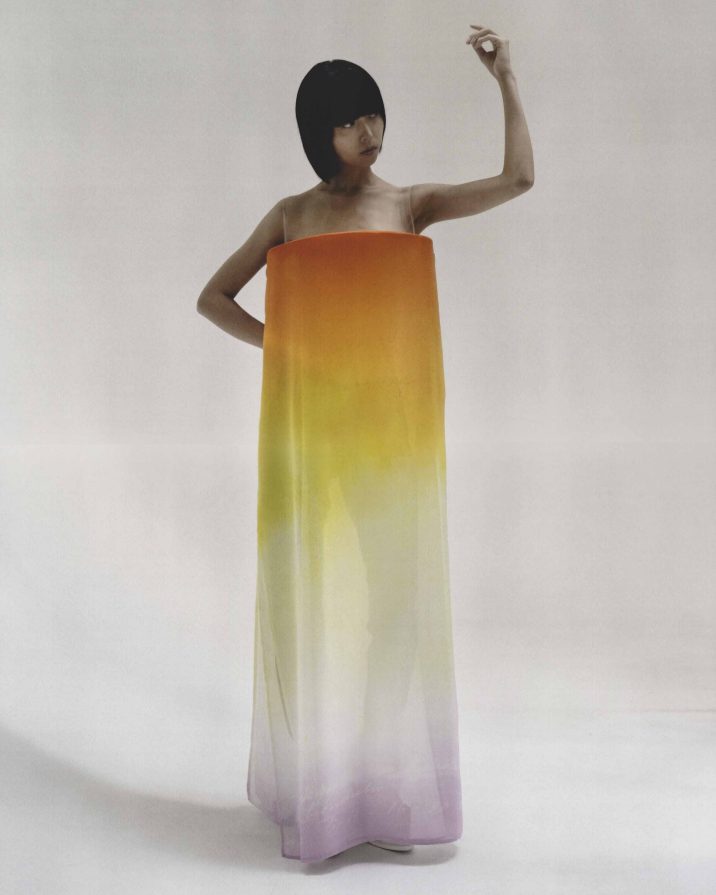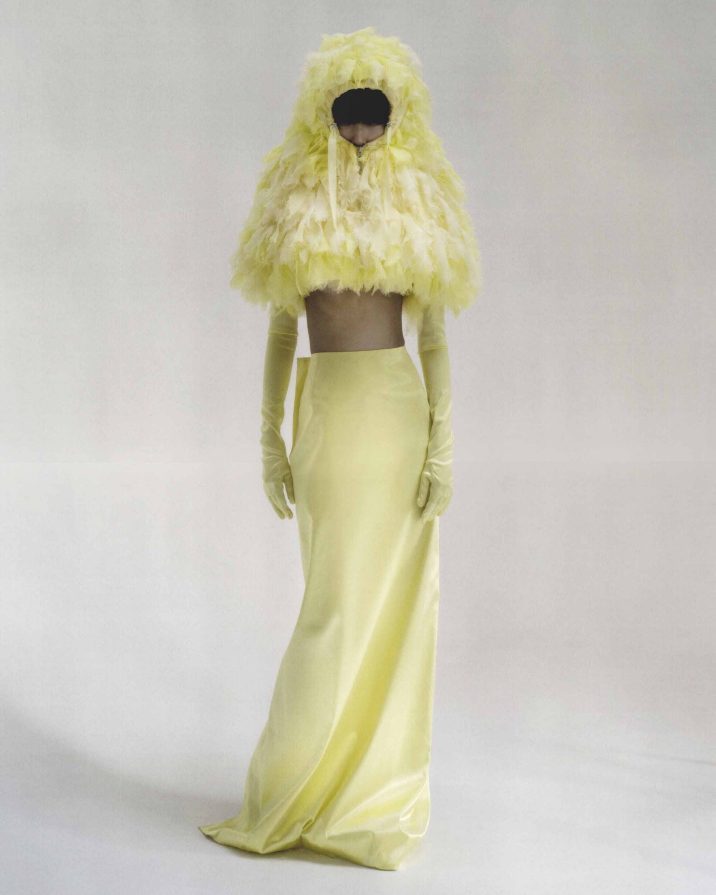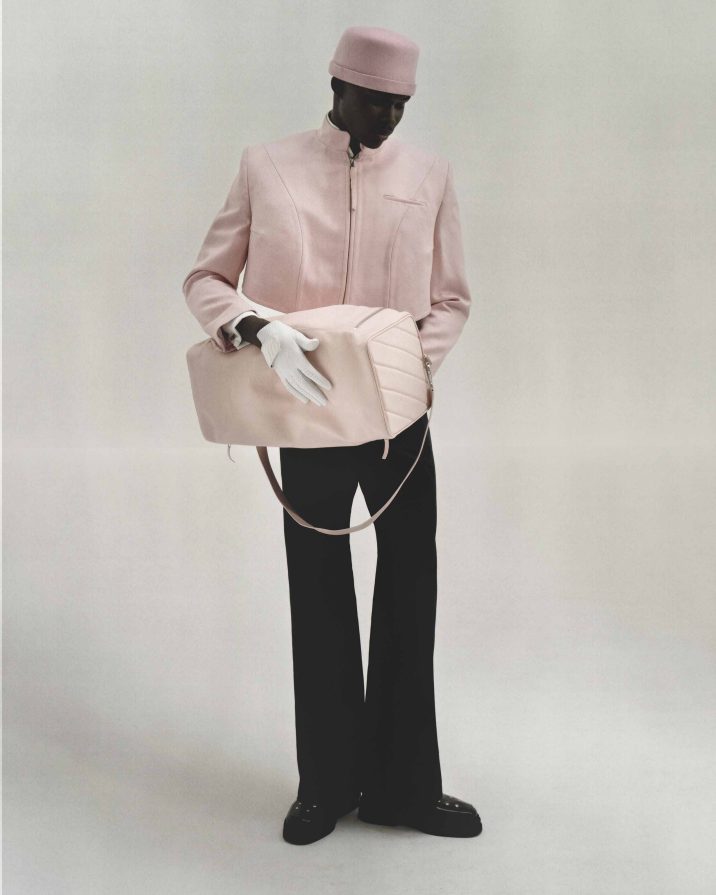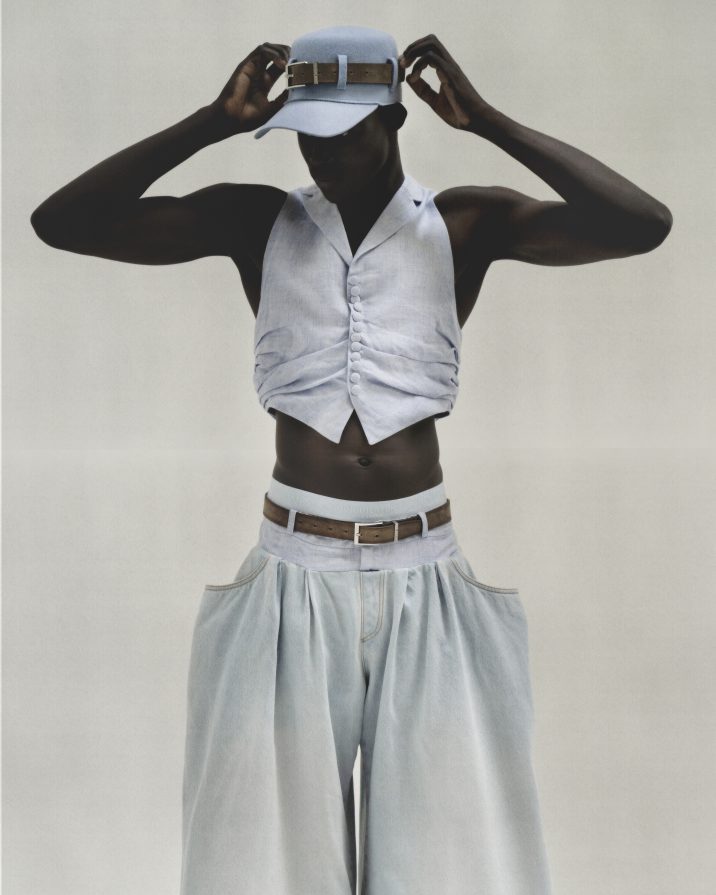Color conversation with Igor Dieryck, winner of the Grand Prix du jury Mode at the Hyères Festival The - Autumn-Winter 24-25 - Colors

Igor Dieryck, who graduated from the Royal Academy of Fine Arts in Antwerp in 2022, swept up three prizes at the 2023 International Festival of Fashion, Photography and Accessories — Hyères, scooping the Première Vision Grand Prix du Jury, the 19M Métiers d’Art Prize and the Public Prize for his collection entitled “Yessir,” inspired by the universe of hotel lobbies. It’s a major sign of recognition for the Belgian designer, who deconstructed the codes of the hotel uniform, revisiting tailoring with streetwear references.
“I was inspired by my experience working as a hotel receptionist, which made me aware of the importance of the uniform. It’s like an extra layer that you wear on top of yourself, which changes the way people perceive you. But underneath the suit, you’re still your real self,” explains the designer.
The pieces are constructed respecting the codes of traditional sartorial savoir-faire, with superimpositions of materials and textures that offer different levels of interpretation. Designs ranging from an ultra-high-waisted suit trouser and a cropped jacket with a rounded silhouette evoking a reception bell to an XXL sequined puffer jacket and a belt masquerading as a corset are paired withaccessories with similarly surreal connotations. Glasses are inspired by champagne bottles and sneakers are encapsulated in moccasins, while a glove grafted onto a bag makes the wearer holding the item look as if they were presenting a tray.
Each silhouette reveals starkly contrasting shades, flushing from sugary pink, sandy beige and a green bordering on neon to flashy yellow and pastel blue. “Color is at the heart of my work. For this collection, I wanted each of my looks to deliver a visual punchline,” says Dieryck. Above all, color helps drive his storytelling. “Each of my looks represents a different character, and color allows me to bring them to life,” adds the designer. Some silhouettes are ultra-flamboyant, with almost aggressive tones, while others feature more discreet pastel shades. During his work as a receptionist, the designer was able to observe in the lobby the behavior of people from different social classes along with employees stuck in the statutory hierarchy. “Some people are totally invisible, hidden away by a system that doesn’t allow them to express themselves. I wanted to convey these differences in status through deeply contrasting colors that reflect different degrees of power.”


The conception of the designer’s colorama palette, which deliberately gathers jarringly disparate tones, happens organically as he finalizes his initially colorless sketches. “It’s an intuitive process. I have an active mind with a tendency to sometimes overthink my concepts. I analyze my creative work a lot, but with color it’s quite the opposite. For example, I have a hard time deciding why I don’t like a color. I keep on experimenting until I find the perfect shade.” With his clashing colors, Dieryck also wanted to create a common thread, to establish a sense of coherence between the different shades. “I created combinations of looks that interact with each other, but it’s more based on a feeling than a technical explanation,” he explains. But he also likes to explore dissonance. “You get the impression that each silhouette is made from a single color, but in reality, depending on the materials, the tones vary. I like these little twists that, at first glance, you don’t notice. I wanted people to ask themselves: ‘Did he make a mistake in his choice of fabrics? Are these discrepancies really deliberate?’’


To create his collection, Dieryck also collaborated with Première Vision exhibitors, notably suppliers of fabrics (Libeco and Beppetex) and accessories (Labels & Things – L&T Caps and Rifra Nastri). “Young designers don’t always have the means to choose the fabrics we want; thanks to these partnerships, I was able to concentrate on what I really wanted, without worrying about volumes and price constraints. I was also able to develop accessories prototypes – for my caps and belts – and delegate the production, which I usually do myself, explaining to others exactly what I had in mind. It’s a completely different exercise.”
Photo credits:
Photographer: Lennert Madou
Make up and Hair: Camilla Catalano
Studio: Metal Antwerp Studio
Male Model: Mamadou – Rebel Management
Female Model: Momoe – IMM Bxl
